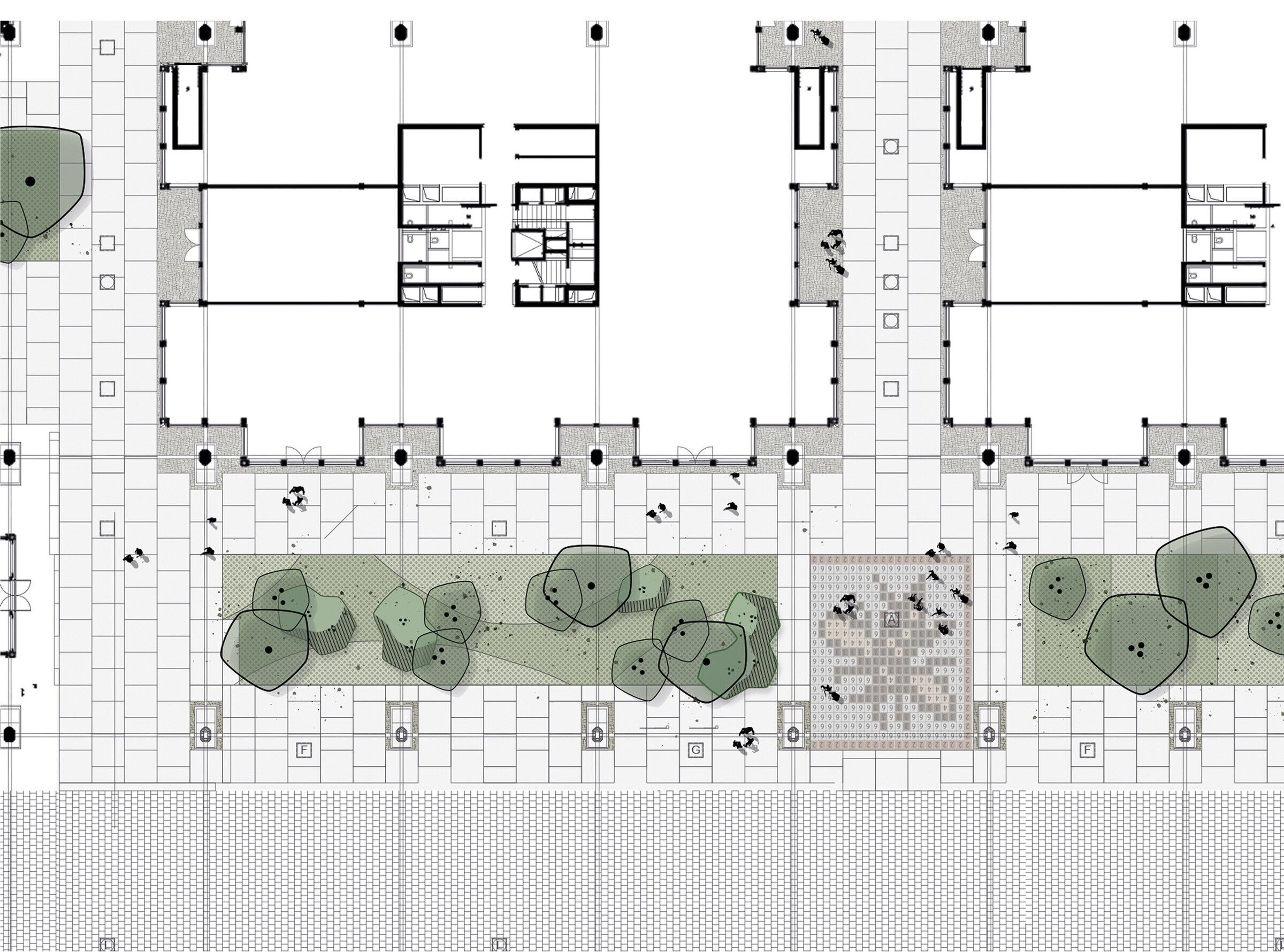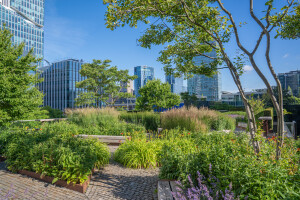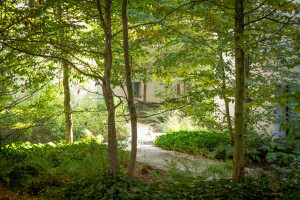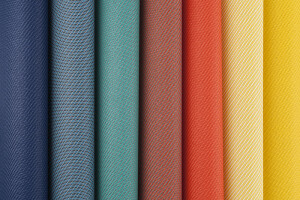Gare Maritime, once Europe’s largest railway station for goods on the Tour & Taxis site in Brussels, has been transformed into a covered city with a mixed program of working and shopping and plenty of public space to relax. Under impressive steel roofs Neutelings Riedijk Architects designed the new Gare Maritime as a city district; ‘a city where it never rains’.
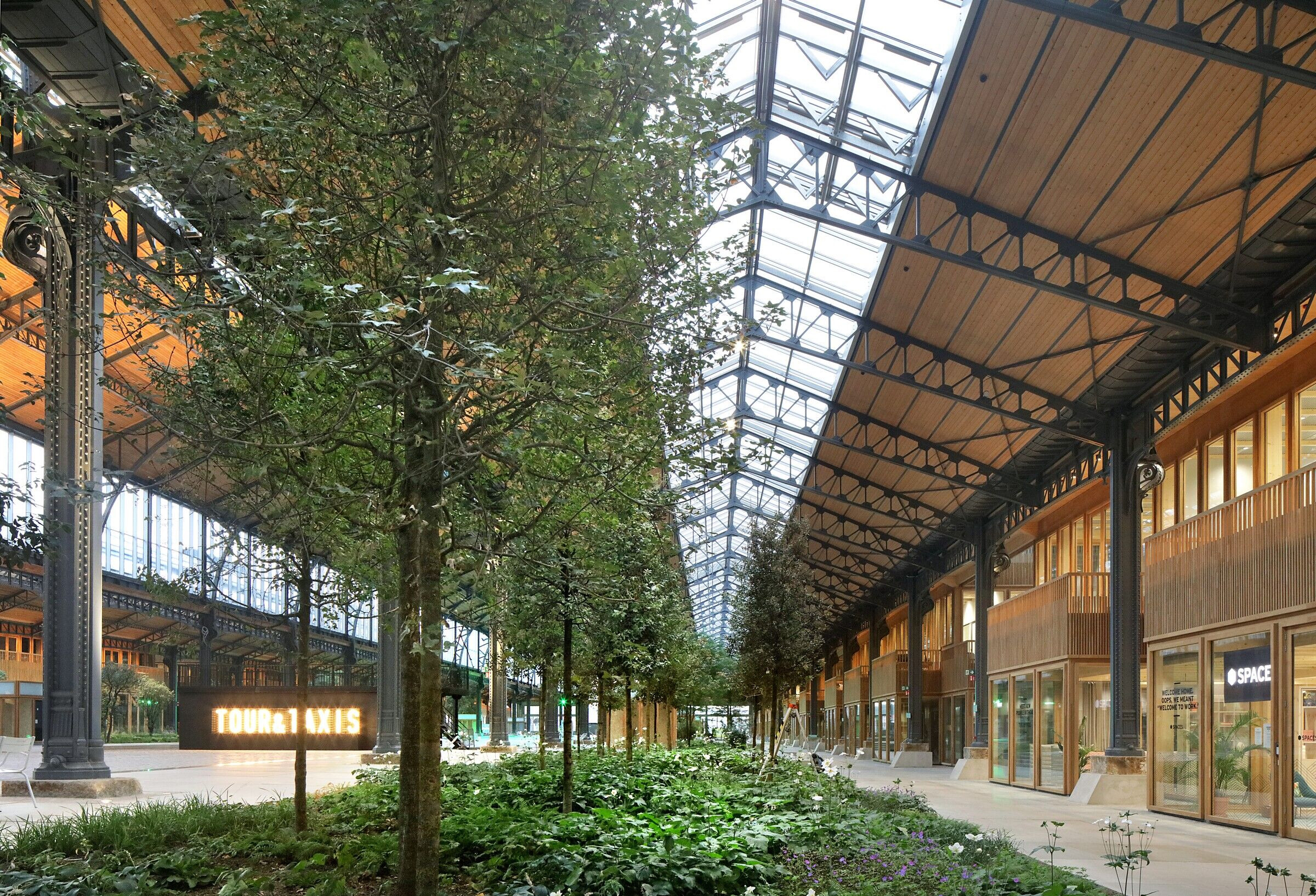

Public gardens and squares
The old station from the beginning of the 20th centuryconsists of three larger and four smaller halls. Under the existingroofsof the side aisles, twelve new pavilions have been addedto accommodate the new program. Theycreate a new structure of boulevards and street, gardens and squares, that follows the existing urban context and the buildingstructure in a natural way, like a true city.
The central space in the heart of the building has been kept open for public events. It has a pleasantclimatewhich follows the changing of the seasons. Inspired by the ‘Ramblas’, on both sides of the event space a green walking boulevard is created. The16 meters wide pedestrian routes give enough roomforspacious inner gardens, with a hundred large trees. Gare Maritime counts a total of ten gardens based on four themes: the woodland garden, the flower garden, the grass garden and the fragrance garden. For the squares, Brussels visual artist Henri Jacobs designed eight mosaics.

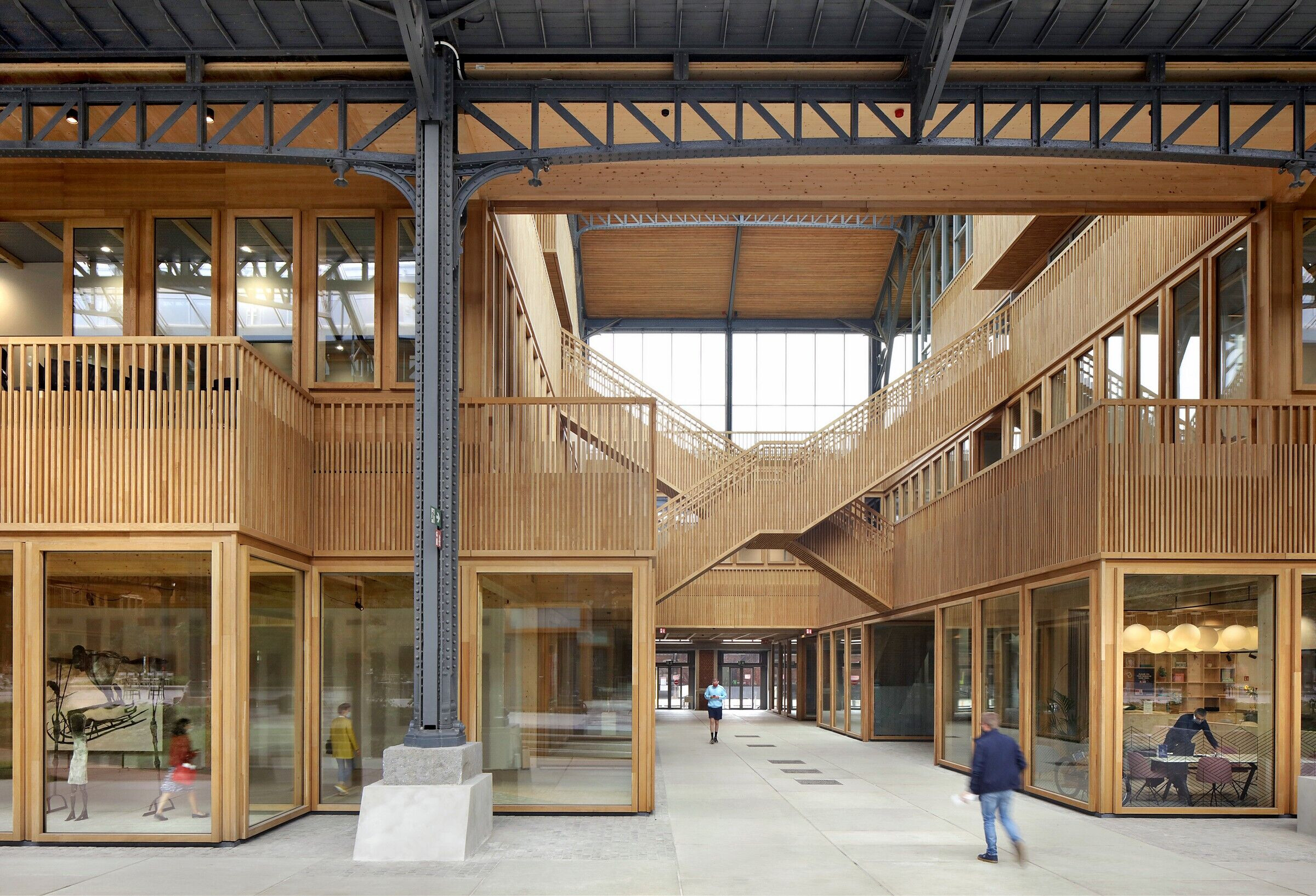
Largest CLT-project in Europe
The new pavilions have been constructedin Cross Laminated Timber (CLT), with an enormous reduction in the amount of cement as a result. The choice forwood also had a favorable effect on the construction process: thanks to prefabrication and the dry constructing method, the construction time was considerably shorter.

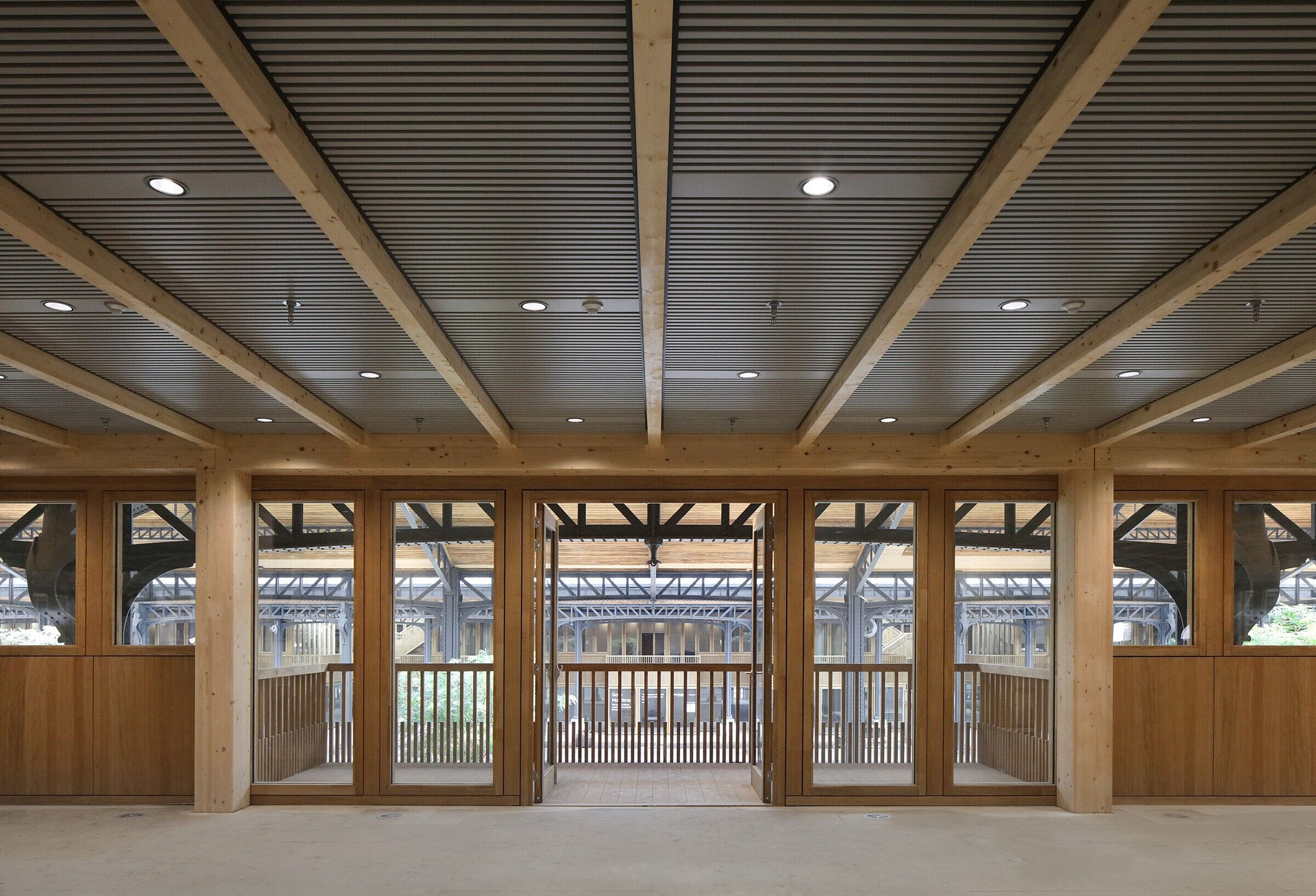
State-of-the-art in sustainability
Gare Maritime is entirely energy neutral and fossil free. The glass facades on Picardstreet are provided with solar cells. On the roofs a total area of 17,000 m2 of solar panels has been installed. At all levels far-reaching sustainability measures have been implemented, such as use of geothermal energy and reuse of rainwater. Gare Maritime is an important contribution to the sustainable development of the Tour & Taxis site and the Kanaalzone in Brussels.
This project was commissioned by Extensa and realized in cooperation with Bureau Bouwtechniek, Ney & partners, Boydens engineering and OMGEVING. In the first phase, the existing historic building was carefully restored by Jan de Moffarts Architects, Bureau Bouwtechniek, Ney & Partners and Boydens.

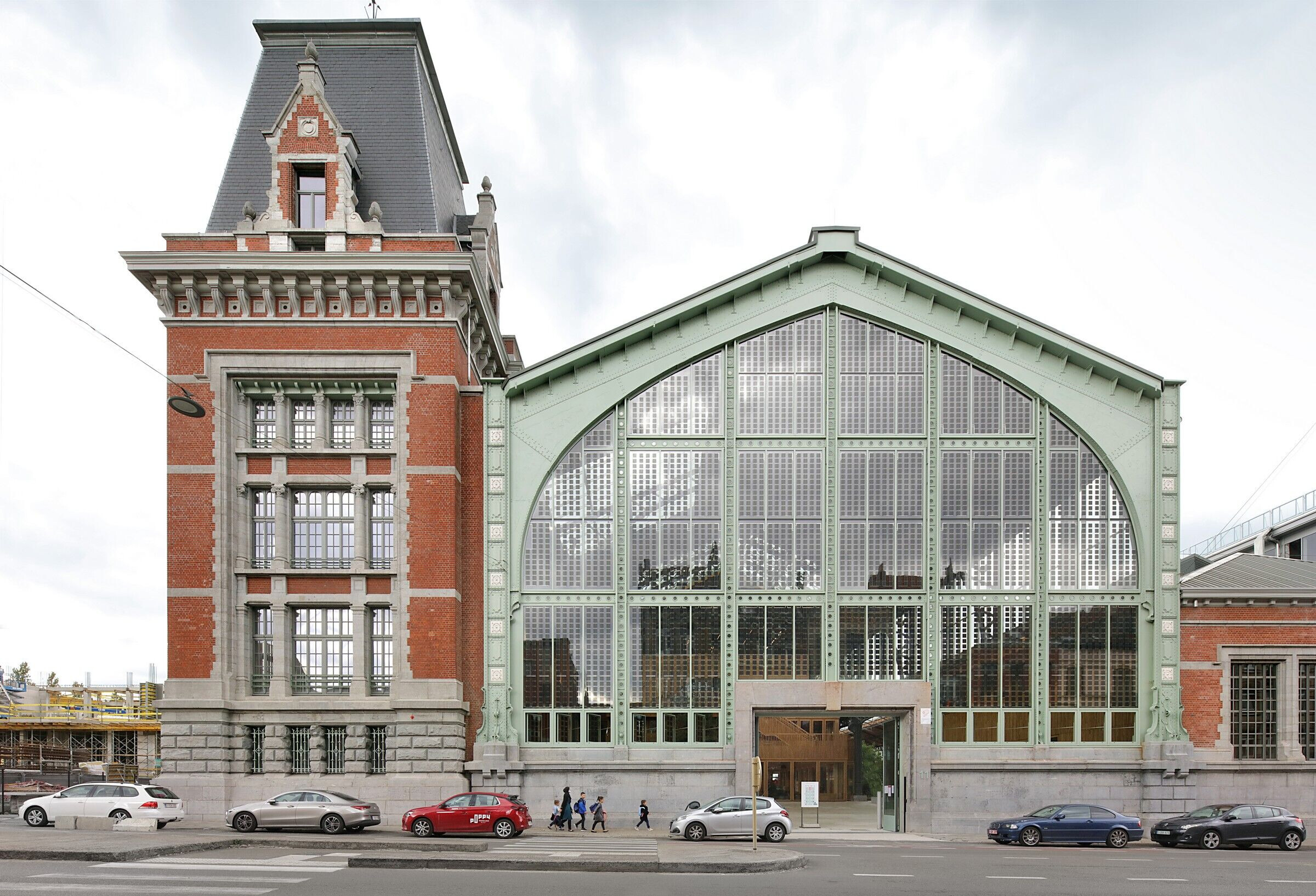
Team:
Client: Extensa Group
Architect: Neutelings Riedijk Architects, i.c.w. Bureau Bouwtechniek
Architectural design: Neutelings Riedijk Architects
Architectural design team: Michiel Riedijk, Willem Jan Neutelings, Dieter de Vos, Kenny Tang, Alejandro Mosquera Garcia, Alexey Boev, Anselmo Nižić, Frank Venhorst, Pietro Manara
Architectural engineering: Bureau Bouwtechniek
Civil and structural engineering (renovation): Ney & Partners BXL
Civil and structural engineering (new pavillions): Ney & Partners WOW
MEP: Boydens engineering, Brugge
Building physics: Boydens engineering, Brugge
Landscape architect: OMGEVING, Antwerpen
Restoration architect: Jan de Moffarts, i.c.w. Bureau Bouwtechniek
Interior designer: Neutelings Riedijk Architects
Artist: Henri Jacobs
Cost consultant: Bureau Bouwtechniek
Acoustics: Venac, Brussel
Fire safety: FPC Risk, Antwerpen
Main contractor: MBG
Wood contractor: Züblin
Installations contractor: Cegelec, VMA, NTSA, Van Hoey, IFTech
Project coordination, safety manager: Bopro
Photography: Filip Dujardin / Sarah Blee / Tim Fisher
Drawings: Neutelings Riedijk Architects / Bureau Bouwtechniek / Ney & Partners / Omgeving


